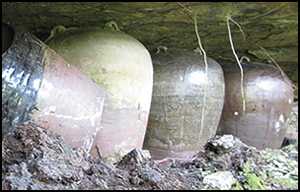Article contents
Isotopic insights into the jar-and-coffin mortuary ritual of the Cardamom Mountains, Cambodia
Published online by Cambridge University Press: 19 October 2020
Abstract

The use of coffins and jars as funerary receptacles was common across Southeast Asia. During the fifteenth to seventeenth centuries AD, cremation was the dominant mortuary tradition on the Angkorian plains, but in the Cardamom Mountains to the south, contemporaneous groups practised a unique burial tradition involving the deposition of un-cremated bone in exposed ceramic vessels and log coffins. The authors present the first geochemical analysis of individuals from this highland culture, specifically the site of Phnom Pel. The childhood diets of those interred in jars and coffins may have been sourced from different areas within the Cardamom Mountains, suggesting that the individuals came from discrete groups.
Information
- Type
- Research Article
- Information
- Copyright
- Copyright © The Author(s), 2020. Published by Cambridge University Press on behalf of Antiquity Publications Ltd
References
- 4
- Cited by

